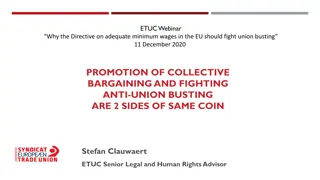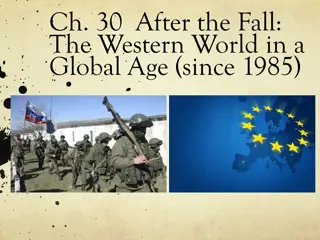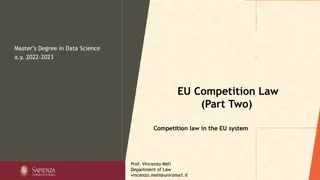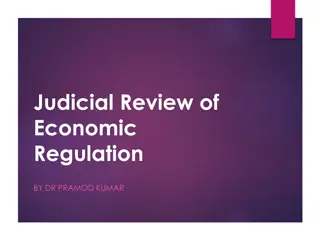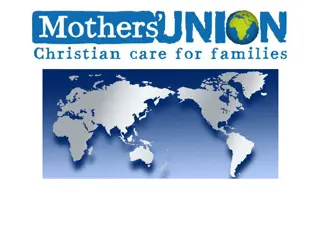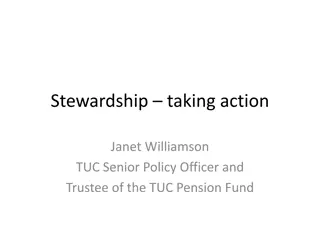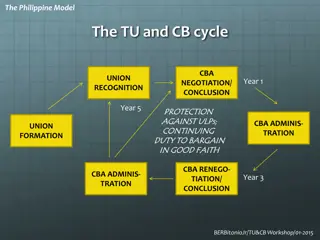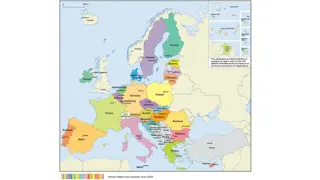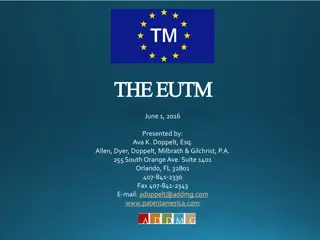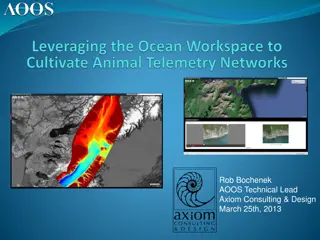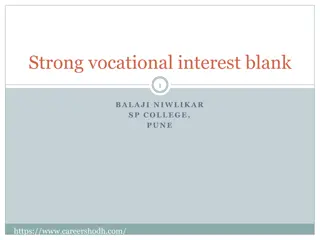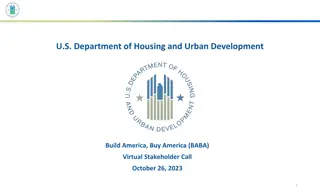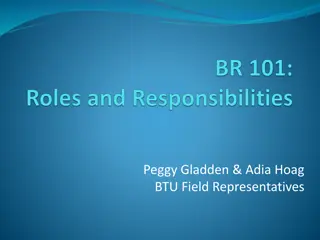Building a Strong Union and Secure Future: Economic Solutions for America
Over recent weeks, analysis of America's economic challenges reveals disparities in wealth distribution, leading to decreased consumer spending and economic instability. The National Union proposes a proactive agenda focused on job creation, policy changes, and community activism to address these issues and promote a fair and prosperous society.
Download Presentation

Please find below an Image/Link to download the presentation.
The content on the website is provided AS IS for your information and personal use only. It may not be sold, licensed, or shared on other websites without obtaining consent from the author. Download presentation by click this link. If you encounter any issues during the download, it is possible that the publisher has removed the file from their server.
E N D
Presentation Transcript
Building a Strong Union and Secure Future
Over the past several weeks we have examined: Whats wrong with America today. Different than what we hear through mainstream media, America is not broke. But, that doesn t mean we don t face serious challenges. As a nation, we create a massive amount of wealth each year. We have the world s largest GDP, and our corporations are experiencing record profitability and high shareholder value. The problem is, working families haven t equitably shared in the growth. The result of a steady shift of wealth to the top 1% has resulted in many families struggling to survive. Grave long-term unemployment and under-employment, combined with the top paying less in taxes, has resulted in an eroding tax base. This state of unemployment is dangerous for the U.S. economy. Over 70% of what the U.S. economy produces goes to personal consumption and unemployed workers. But, those getting unemployment assistance can t spend at their previous level. The lost production of those workers reduces our GDP and moves the country away from the best uses of its resources.
Diminished revenues received means fewer services available to support working families needs, and less capacity to keep our standing as the most productive society in the world. It all comes down to JOBS. If we had full employment, we wouldn t be threatened by issues such as the recent Fiscal Cliff, Sequestration, cuts to Social Security and Medicare, or the approaching debate on raising the debt ceiling. The National Union recognizes this problem. We are about more than whining about the challenges we face. As a union, we are committed to developing a plan of action that helps provide a solution. We start off with a real plan for JOBS --- JOBS --- JOBS ! Our plan of action focuses on: 1) Proposing positive changes in policy that will promote continued economic growth and maximize our chances to compete, and 2) Connecting with all working people to build a mass movement to fight for a fair and equitable America.
The first step is to secure our economy. We believe we can do that by demanding policy changes that target real job creation. In short, PUT AMERICA BACK TO WORK! To accomplish our vision, we need to give community and political activism a greater priority than ever! Previous generations have also faced challenges. Our history proves that we can overcome our challenges through personal activism and relentless pursuit in the fight for fairness. UWUA PLAN OPPOSE THE LOSS OF PUBLIC SECTOR JOBS DEVELOP SKILLS NEEDED TO INVEST IN OUR FUTURE A PUBLIC WORKS PROGRAM TO REBUILD OUR INFRASTRUCTURE NATIONAL INDUSTRIAL POLICY LABOR LAW REFORM TAX BREAKS ONLY AFTER AN INVESTMENT IN AMERICAN JOBS
Jobs - Jobs - Jobs 1. Oppose loss of public services and spending cuts that lay off public sector workers (Police, Fire, Health Care, Teachers, Administrators)
Lets start off by Stopping the Bleeding. We currently have over 23 million Americans unemployed. This includes those collecting unemployment benefits, millions of others who are working part-time because they can t find full-time employment, and those who have been out of work for so long that they have given up looking. Since 2009, almost 500,000 municipal employees have been laid off. In addition, 300,000 teachers have hit the streets. This number does not even reflect the job loss that will happen due to the Sequestration cuts! Reductions in the number of public employees not only robs us of access to needed public services (e.g., police and fire protection), but also contributes to an already unacceptable level of unemployed workers and strains to our communities. We know that state and municipal resources are stretched to the extreme. However, the solution can t be the easy out of slashing public employee rolls. We must demand that there can be no more layoffs of public sector employees. We simply can t afford it. Public officials need to hear our outrage and find better solutions. We can do better. A full employment policy will give us the resources to maintain a competitive education system and keep our communities safe.
Jobs Jobs Jobs 2. Develop skills needed 2. Develop skills needed Invest in our future Invest in our future Percentage of Age 25 - 34 With a College Degree 35 30 25 U.S 20 China Russia 15 Japan 10 India 5 0 2000 2010 2020
Its possible that America can continue to be the worlds leading economy. But to do so, it will require that we have the education and skills necessary to lead in new innovation, technology, and productivity. Other nations recognize education as a priority. We need to give it the same priority. If current trends continue, China will dwarf us in the number of people aged 25 to 34 with a college degree. In fact, even India will have more people within this age group educated and prepared for the future. And, Russia and Japan won t be far back.
So, why is the level of American youth attending college declining? For one thing, the cost of tuition is becoming unaffordable. In the past 30 years, tuition costs in the U.S. has soared 1200% ! This triples the rate of inflation of all other consumer price increases during the same period of time. Fewer scholarships available to lower income and middle class families and less public funding result in far less opportunity for all. Today s students are being forced to take on massive debt in student loans. Therefore, our youth is beginning to question, is college really worth it? The prospect of being saddled with long-term student loan debt is daunting. Add to that fewer opportunities for jobs and declining wage levels; it s easy to understand the loss of faith in our system.
Jobs - Jobs - Jobs 3. A public works program to rebuild our infrastructure
How does the U.S. infrastructure grade out? In its last report in 2009, The American Society of Civil Engineers graded us with a D.
Infrastructure Spending as a Percentage of GDP 12 10 8 6 4 2 0 China India Europe U.S.
Our decaying infrastructure robs us of our ability to compete! Should we accept failing grades in all areas of infrastructure capacity? Of course not. During the Great Depression, President Roosevelt challenged the private sector: Either you begin to hire workers or the government will. They didn t and he did ! The result was millions of Americans went to work building infrastructure - parks, roads, utilities, and public services. We need to do the same today. A 5-year, $1.2 trillion infrastructure investment program would create 23,000 jobs for every $1 billion of investment. That would create 5.52 million jobs in each year of the 5-year program, or 27 million jobs. The U.S. economy relies on low transportation costs and the reliable delivery of clean water, natural gas, and electricity to businesses and households. It s time to fix it, and who should pay the bill? How about those that benefit the most from infrastructure improvements --- those that are raking in the billions of dollars of profits that we have discussed.
Electricity: Unless substantial amounts of capital are invested over the next several decades in new generation, distribution and transmission facilities, service quality will continue to degrade and costs will skyrocket. Investments must be made in new technologies that will improve the existing electric system and advanced technologies that can revolutionize the electric grid. By 2030, electric utility investments needs could be as much as $1.5 trillion. Water: Aging, under-designed, or inadequately maintained systems discharge billions of gallons of untreated wastewater into U.S. surface waters each year. Many systems have reached the end of their useful design lives. It has been estimated that the U.S. looses almost 7 billion gallons of drinking water every day. The poor condition of many of the nation s 16,000 wastewater treatment facilities is the result of lack of investment. Investment must focus on upgrading and replacing existing systems, as well as building new ones, and watershed approaches that look more broadly at resources in a coordinated way. Natural Gas: Over the next 30 years, the Energy Information Administration expects domestic natural gas production to account for 30% of power generation, compared with 16% in 2000. Over half of the U.S. pipeline system was built before any federal regulatory oversight was enacted. The U.S. natural gas distribution and transmission infrastructure is in critical need of assessment and modernization. Between 2005 and 2011, 11% of the incidents that involved gas mains involved cast or wrought iron even though only 2.7% of the distribution system is made out of these antiquated materials.
JOBS JOBS JOBS 4. National Industrial Policy
We are one of the few nations on earth without a National Industrial Policy. Why aren t we committed to maintaining at least minimum levels of production within our manufacturing industries? We first lost jobs and capacity in the clothing and textile industries, then within electronics, next came our ability to produce steel, and today it s a steady erosion of auto jobs. Technology is like muscle - You either use it or you lose it. If we aren t committed to continuing a manufacturing base, we will eventually lose our standing as the most technologically advanced nation. That not only threatens our economic future, but also impacts our national security in a world that is becoming more dangerous. Too many corporations that have reaped massive wealth are abandoning U.S. workers while exploiting workers in low wage regions across the globe. It s time to demand that those who we have invested in, invest in us, and produce at least a minimum level of product in America!
JOBS JOBS JOBS 5. Labor Law Reform We shouldn t settle for just jobs. We need good jobs, and that means union jobs with the right for workers to engage in collective bargaining. There are millions of workers who want to join unions and are prevented from doing so by our antiquated legal system. Laws ensuring workers rights to engage in organizing and collective bargaining haven t been meaningfully changed to help workers since 1935. Corporations have caught on to union busting, and have become very effective in breaking the law and keeping unions out. Employers routinely break the law by intimidating and/or threatening workers and fire union organizers. Current law does not protect workers. The existing process is more favorable to business interests than to workers. We need real labor law reform to protect workers rights!
Jobs Jobs Jobs 6. No more blank checks Tax breaks only AFTER Investment
Lastly, we need to reform our investment policy. Currently, we give a blank check in the form of tax credits to Corporate America in the hope that they will use those savings and hire workers here at home. The jury is in: after 30 years of gathering data, Trickle Down hasn t worked. Too often, we ve seen the wealthy corporations benefit from reduced taxes and put the savings in their pocket -- or invest outside of America. We foot the bill for this. Any future tax break for American corporations needs to be connected to accountable, measurable job creation here at home. It s simple - Create a job, get a tax credit. If you choose to take the wealth the American system has helped provide you with, either pay the tax or invest in America. It s really pretty simple.
We know that changing the important policies we have described wont come easy. Change in America has never come easy. We also know that it will take time to implement policies that put America back on track. It s time to start that fight back to restore the American Dream! We can learn from our history. During the depths of the Great Depression in 1932, workers organized around issues of fairness and common sense. It was that kind of organizing that led to the development of the CIO and CIO- unions like the UWUA. The change we promote isn t new or innovative it s our roots, and we believe it s time to return there. How do we do it? Stay tuned. Next week s edition of E-News will begin to lay out the process for a new engagement of individual activism.


